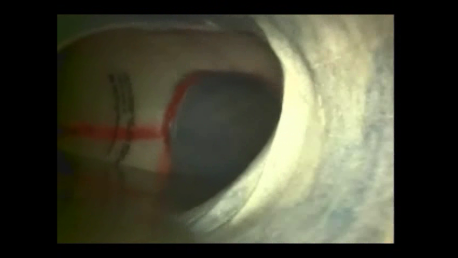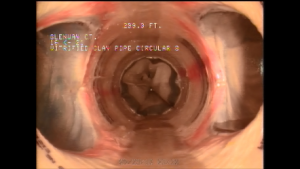May 2014, Vol. 69 No. 5
Features
LMK Dual Pipe CIPP Process

LMK Technologies has developed and introduced a technology that permits the simultaneous application for a single-piece of CIPP (cured-in-place-pipe) liner for the main pipe and multiple branch pipes.
CIPP lining of sewer mains and laterals is not new, but until now, those methods required mainline pipes and laterals to be rehabilitated separately, said Larry M. Kiest Jr., LMK president and founder.
The technology was unveiled at the 2014 Underground Construction Technology International Conference & Exposition (UCT) and has been successfully used on several projects, said Kiest.
Qualified contractors can license use of the technology from LMK which manufactures lining and installation equipment.
“We developed a liner that would invert in the main pipe as the liner passed by two or three laterals and liner tubes begin to invert up the lateral pipes.” he explained. “The mainline liner continues to invert past the sewer service lateral pipes.
“The result is a single unit liner that renews a portion of the main pipe and multiple laterals all at one time.”
Kiest cites an example of a project in Fort Myers, FL, where a short section of main pipe and two opposing Siamese laterals, each 65 feet long, were lined with the process. Siamese laterals, he said, are two laterals exactly across from each other at 3 and 9 o’clock.
Compression gasket
All ends of the liner tubes are sealed by use of a compression gasket. “This is most important,” Kiest emphasized. “Otherwise the liners will leak because they do not bond to the mainline liner, allowing water to track behind the liner and reenter the sewer.
“We have done as many as three service laterals at one time. Our research and development department works continually to perfect the system to renew the entire pipe length from manhole to manhole and renew each lateral along the way through a continuous inversion of many liner tubes. In some cases, the lateral connects to the main pipe at 12 o’clock, extends up five to six feet, and deadheads into a bullheaded tee fitting that splits off into separate lateral pipes. We refer to this pipe configuration as double stack lateral liners.”
Basic equipment to implement the process is the same used for conventional CIPP installations and includes push cameras, lateral launch camera, steam boiler, wet-out trailer, robotic “positioner” and launchers to invert the lateral liner from the launcher into multiple lateral pipes.
Kiest describes the steps in making an installation:
• First, lasers and cameras are used initially to obtain exact measurements inside the pipe and record a pre-installation video inspection;
• Liners are resin saturated on-site in a temperature controlled wet-out trailer. The wet-out is performed using a controlled vacuum source to remove air within the void space of the fabric liner tubes as a slug of catalyzed thermoset resin is moved through the liner tubes under a calibrating slug roller;
• Liner tubes are positioned inside of a translucent bladder, together forming a liner/bladder assembly;
• The liner/bladder assembly is loaded into a launching device comprised of a lay flat hose which is at least the length of the liner;
• The liner assembly is pulled through the main pipe by use of a powered hose reel until the liner is positioned adjacent to the service connections to be renewed;
• Final positioning for exact placement is performed by use of a robotic positioning device;
• Air pressure is applied causing the liner assembly to invert in the main and extend into corresponding sewer service connections;
• A steam boiler and 250 cfm air compressor housed in a steam truck provide heat that quickly cures the liner to form a single homogenous cured-in-place pipe; and
• All ends of the CIPP are outfitted with swelling compression gaskets.
Engineered solution
Kiest said the repair of multiple lateral pipes through the inversion of a mainline liner tube and multiple lateral tubes having a uniform wall thickness that is assembled, sealed and tested in a controlled factory setting, gives utility owners an engineered trenchless solution for these unique pipe connections.
A push camera coming down the lateral looking at the main and the service connection on the other side of the main

He added that the process is challenging for a variety of reasons. “One of the most critical,” he said, “is that the field survey measurements must be near to exact and that those measurements are matched in a liner manufacturing facility. Those in the art of CIPP renewal techniques also will understand that the correct materials must be used, and often proprietary methods are practiced, which is common for most new technologies being introduced into a field of special products and services.”
Based in Ottawa, IL, LMK Technologies has designed multiple trenchless systems and processes for sewer lateral renewal and sealing a major focus. The company owns more than 100 issued patents and continues to be an industry leader in developing lining products, installation equipment and training for rehabilitating North America’s sewer collection systems.
FOR MORE INFO:
LMK, (815) 433-1275, www.lmktechnologies.com




Comments